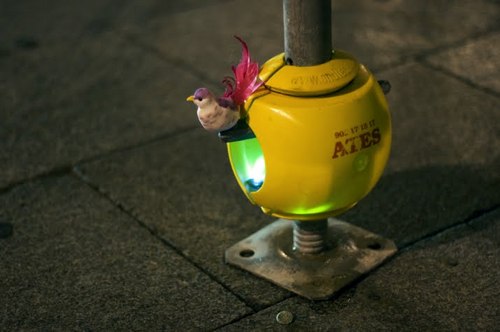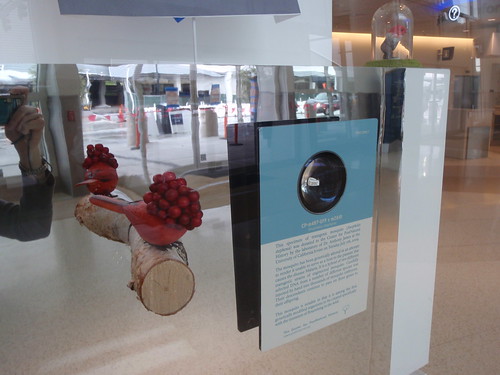Scaffolding – backbone for and as art
I’ll be writing a full preview of the upcoming 01SJ Biennial this week, but this “urban nest” (via Alias Arts) reminds me of the central role that Madrid-based architect Angel Borrego Cubero’s scaffolding design for Out of the Garage, Into the World sets the stage for a different way of thinking about the “exhibition.”
Some images of Angel’s design from the 01SJ publication (designed by Matthew Rezac).
He writes in the catalog.
Some Principles
Working Space
The architectural concept for Out of the Garage, Into the World should be as close as possible to that of the exhibition itself, to what the curators are trying to achieve, and to what the artists themselves are doing. We should achieve the transformation of the exhibition into a working space, in which the processes are transparent to the public. Its architecture should not rely on dividing and blocking parts of the space, but rather should help bring work and public together.
Public Space
The public should experience an atmosphere that involves them, that places them in the space of work and empowerment. This atmosphere should produce the fascination and anticipation of entering a good restaurant through the kitchen.
Exhibition Space
Agglomeration, juxtaposition, sharing, decking, groupings, and, in general, the renegotiation of the limits of the artwork should give way to a rethinking of what it is to organize an exhibition and offer a new paradigm of how these elements and actions can be understood. From schemes that suggest the master plans of suburbia, we would like to propose exhibitions that evaluate more dense, collaborative, and diverse urban and architectural strategies.
Of course, the urban nests are also reminiscent of Misako Inaoka’s Red Bird, which is included in the Small Wonders wundkerkammer curated by ZER01 for the amazing public art program at the San Jose airport. You gotta fly into there sometime.
Small Wonders flickr set by Jaime Austin.



